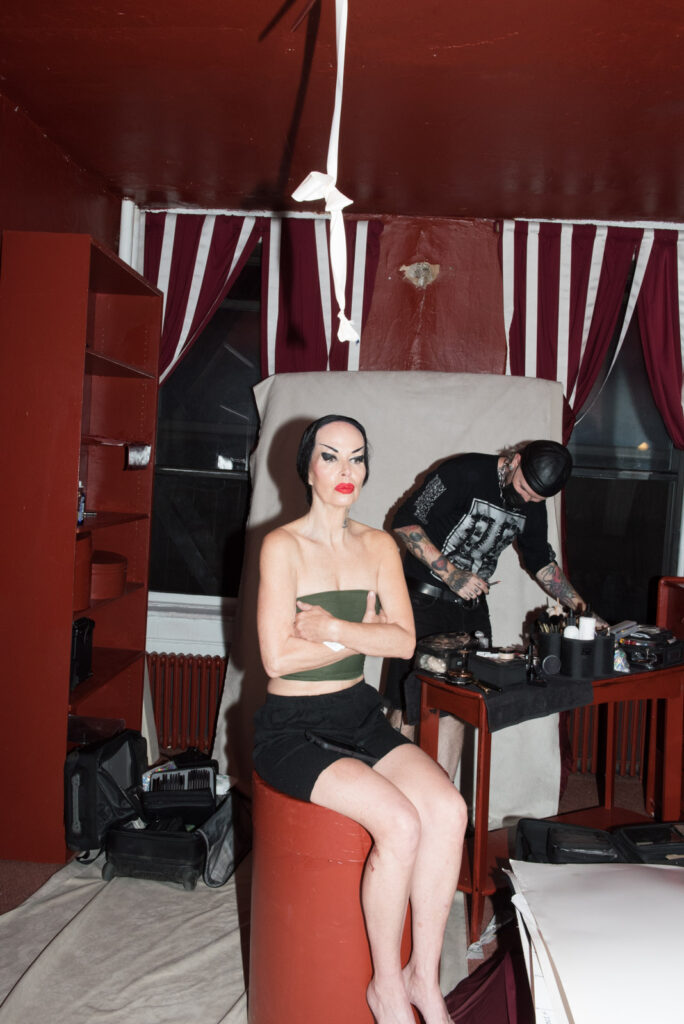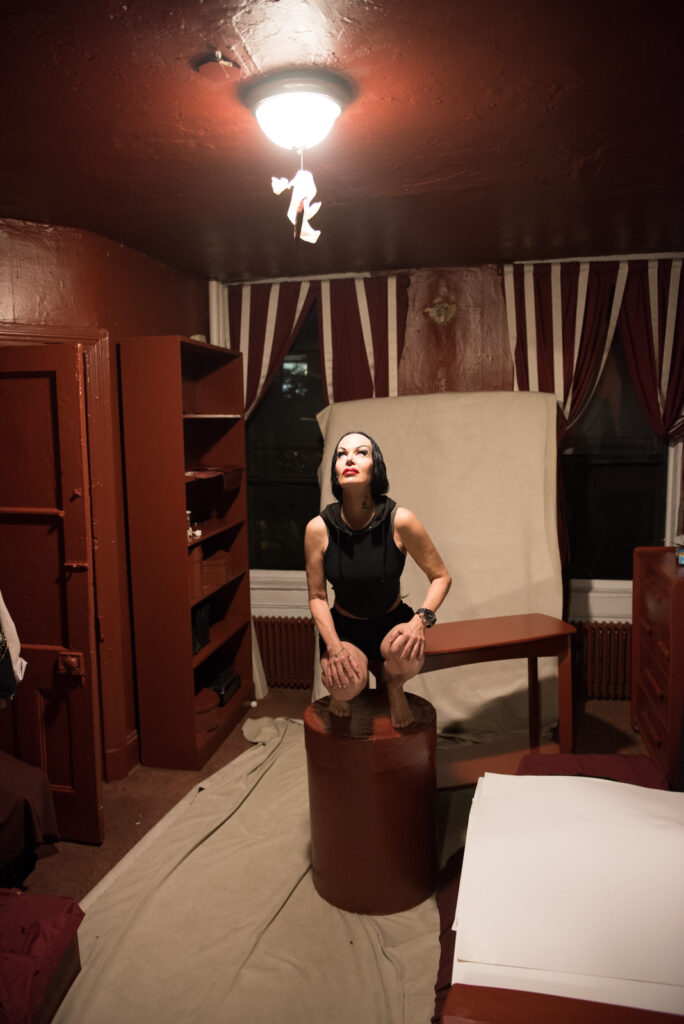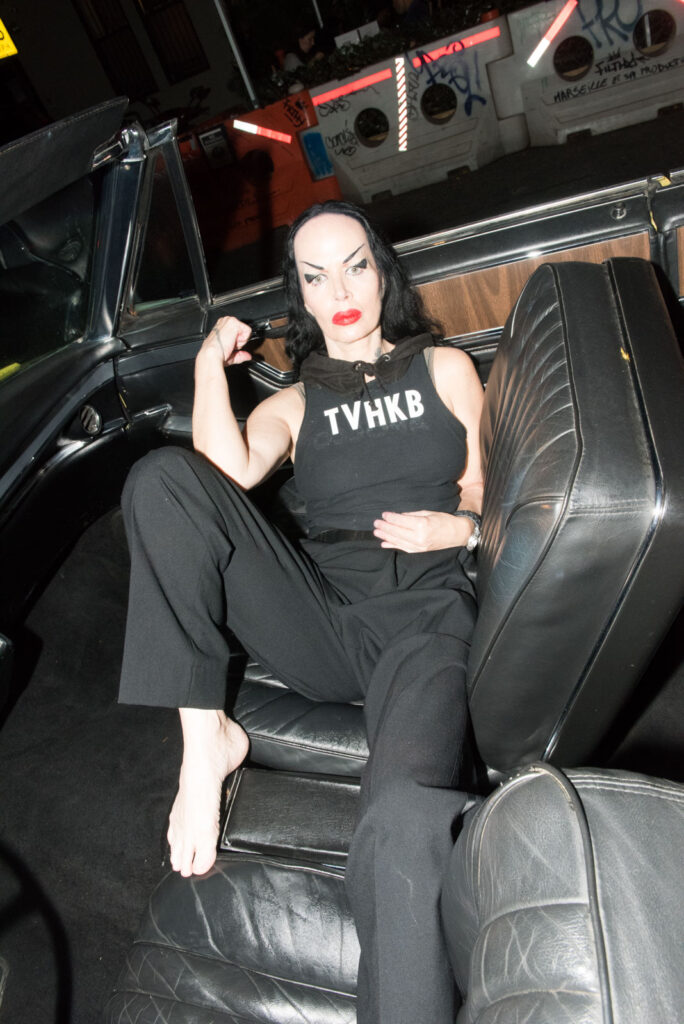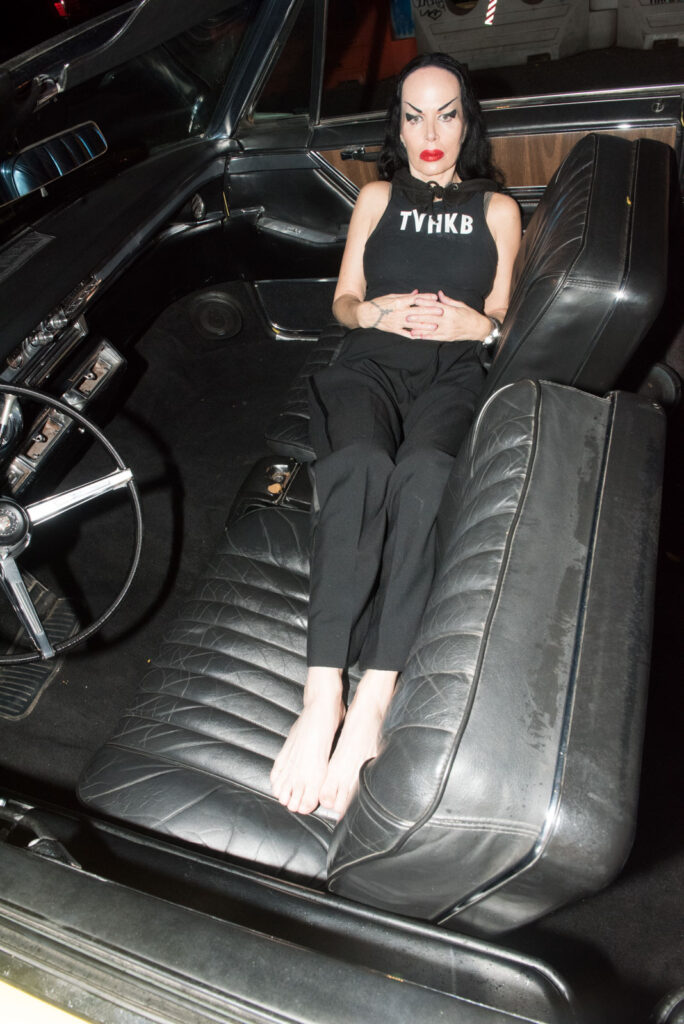The Voluptuous Horror of Kembra Pfahler

styling KEMBRA’S OWN
makeup TONY TULVE
talent KEMBRA PFAHLER
TVHKB, BEAUTIFUL LABEL EST.1990
Kembra Pfahler is an American performance artist, actress and filmmaker based in New York. Growing up in a creative household on the foreshores of Hermosa Beach, California, Pfahler took an interest in a creative vocation from early on. After moving to New York in the ’70s, Pfahler embedded herself in the Cinema of Transgression movement, a monumental period in underground filmmaking that “paved the way for a lot of young filmmakers today.” During this time, Pfahler also started interdisciplinary rock band The Voluptuous Horror of Karen Black alongside her first husband, Samoa Moriki. The two have created an immense discography together, with a new album on the way. Despite not finishing high school, Pfahler studied at New York’s School of Visual Arts under Mary Heilmann and Lorraine O’Grady, later going on to teach art and performance at universities across America, including Yale and Columbia.
to Be caught up with Pfahler near midnight, her time, where she sat nestled in her New York studio apartment, backdropped entirely in blood red paint, with her latest work for Emalin Gallery, titled On the record, off the record (2021).
Annabel Blue: Hey Kembra, can you tell me about your upbringing and background in art?
Kembra Pfahler: I grew up on the ocean at Hermosa Beach, California. My father, Freddy Pfahler III, was a legendary surfer – he featured in a lot of films including The Endless Summer (1966) and Slippery When Wet (1958). I used to surf but I’m not very good. It was he, my birth father, who got me into films.
AB: You must miss the ocean, seeing as you’ve been in New York since the ’70s?
KP: Yes, I do miss it a lot. The ocean is a part of me. But I love the spirit of New York City – this is home.
AB: You went to art school when you got to New York, is that right?
KP: Yeah. So, my aunt was a casting director for horror films. She had worked alongside some huge names at the time including Katheryn Bigelow and Stephen King. One of her friends had seen some of a drawings and suggested I prepare a drawing portfolio for New York’s School of Visual Arts. I later got accepted, which was cool considering I never finished high school.
AB: You’ve also been designing lately … What design projects have you been working on?
KP: I’ve been designing a little for a potential clothing collection, which keeps me up most nights into the early hours of the morning. I sent designs over to my good friend Rick Owens. He and Michèle Lamy have been two of the main people to say, “You need to keep going and doing what you do,” which means a lot to me.
AB: You’re also working on a new album for your band The Voluptuous Horror of Karen Black (TVHKB)? Can you tell me a little about that?
KP: TVHKB is an interdisciplinary rock band established by my first husband Samoa Moriki and myself. We were married for 21 years. The band is named after one of my favourite characters in the 1975 fi lm Trilogy of Terror by director Dan Curtis. In terms of the new album, it took me about ten years to compile the lyrics. I don’t have a label that supports me and therefore I don’t have any time constraints. My last album I shelved and didn’t put out … I guess I’m fortunate because I don’t have people pushing me for management of my time. When I was a child in Los Angeles, I decided that I didn’t want to live on that side of the tracks, in terms of representation and what not. People were always asking me, “What’s up with your makeup?” and “Why do you dress like that?” I’d say, “What makeup? I’m not wearing any makeup, I usually wear full body paint!” [Laughs] It’s a lifestyle choice, I guess. I chose to be who I want to be. I have very intelligent friends and family so I have the tools to learn how to not listen to people telling me that I can’t do what I want to do.
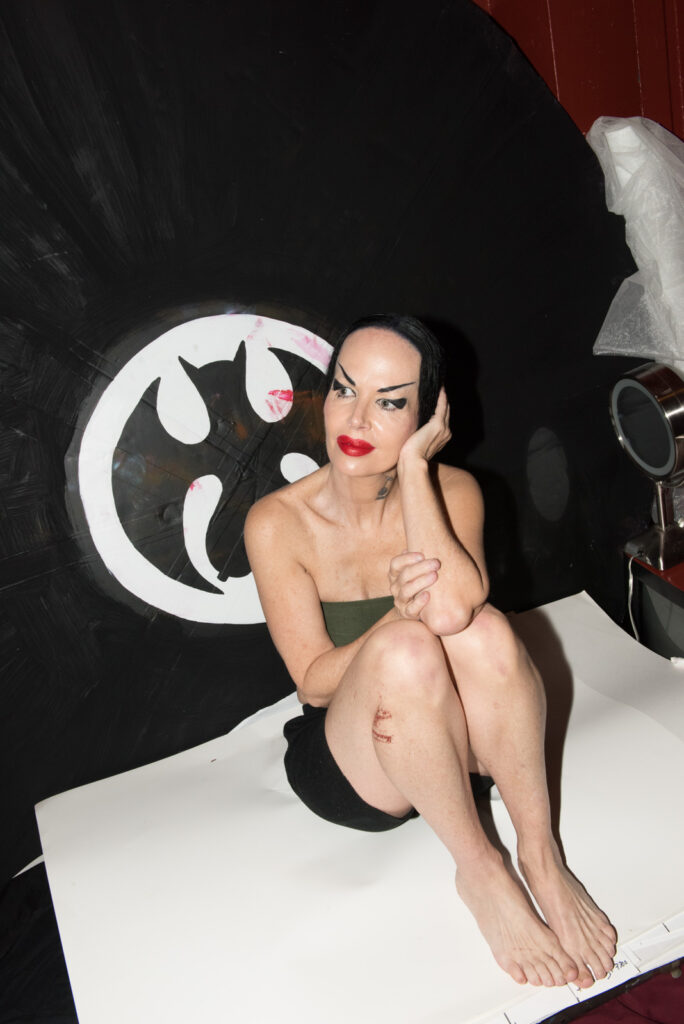
AB: What was it like living during the time of the Cinema of Transgression movement in New York City?
KP: I started acting in the ’80s – it was a really great time to be in New York. I made one film with American filmmaker Nick Zedd called War is Menstrual Envy, which was set in a post-apocalyptic future. The story is about a handful of ragged survivors attempting to communicate with dolphins, while another group of survivors have made it their crusade to destroy all the world’s religions. I also worked with the famous Cinema of Transgression director Richard Kern; he lives a few blocks from me and we still keep in contact. There was also a lady called Tessa Hughes-Freeland who paved the way for a lot of young filmmakers in the ’80s and beyond. She started The Underground Film Festival, which is still really famous. Also, I met filmmakers like Jack Smith, who died of AIDS in the ’80s. These sorts of people really left a legacy for future generations of filmmakers. Their work is so great.
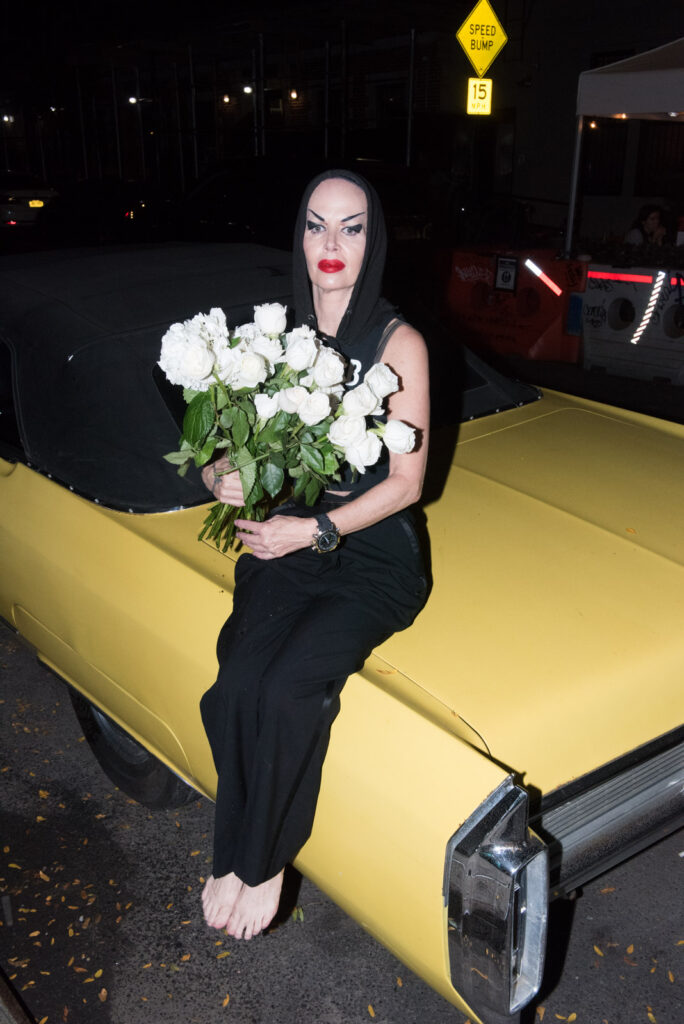
AB: You mentioned the other day that you felt the art community in New York City had been ‘cracked’. What did you mean by that?
KP: To me, a renaissance is a golden time when the lights get turned on. I think New York in the ’80s was certainly a golden era, but of course things change. The years leading up to the ’80s in New York saw some really powerful ‘consciousness raising’ changes – those were the years that gave us people like Martin Luther King and Malcolm X and Alan Watts from the ’60s, when lights got turned on. Now, in 2021, it’s really nice to see young people getting to open galleries and run publications, but I think there has been a big change in corporate morality. There is still misogyny and racism here, those things have never been eradicated. I think a lot of larger corporations and galleries now monopolise on this.
AB: Can you tell me about the gallery you’re represented by in London, Emalin?
KP: Yeah, it’s run by some really incredible young people. They put on incredible exhibitions. It’s very rare to find a gallery that provides space but also really loves art and what an artist does. I’ve been really fortunate with the places where I’ve done my projects, but I really love the people at Emalin. It’s interesting that all of the galleries I have worked with don’t hate each other’s guts. They think it’s disastrous to be in competition. If you’re a musician or artist, you should never be in competition.
AB: That’s an interesting point. I think that younger generations now compete with one another more readily. This concentrated sub-strain of competition has been perpetuated by social media and capitalism more broadly.
KP: The hard question is: how do we participate in capitalism knowing how virulent it is without utterly starving to death? It’s something young people, old people, everyone is dealing with. Dictatorships and facism have never been absent from the state of war, which transcends the modern day.
It’s like that ACDC song, “War Machine” – it’s such an old song but it’s still so relevant today.
AB: What are your tools to deal with some of these imposing structures?
KP: I would say, never compare yourself to other artists. That’s what I tell my students at Yale and Columbia. Be your own kind of artist.
SAM QUEALY
By Katie Brown
Artist Josh Robbins On 'Natural Abstraction'
By Riley Orange
Nabilah Nordin
By Sophie Prince
Lonnie Holley on Improvisation and Personal Truth
By Rachel Weinberg
Der Greif x Quantum Reshaping The Future of Photography
By To Be Team
The Artists are In Charge: Anna Horne and Henry Jock Walker talk Neoteric
By Anna Horne and Henry Jock Walker
